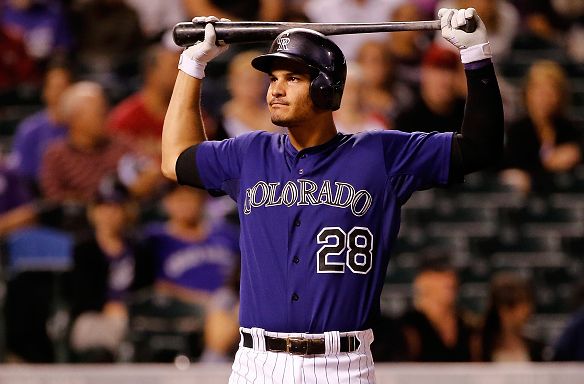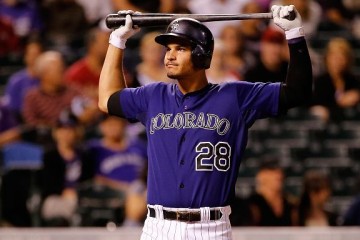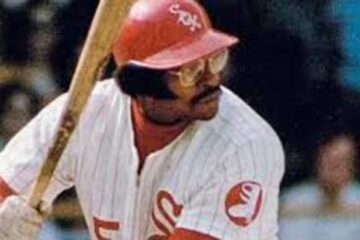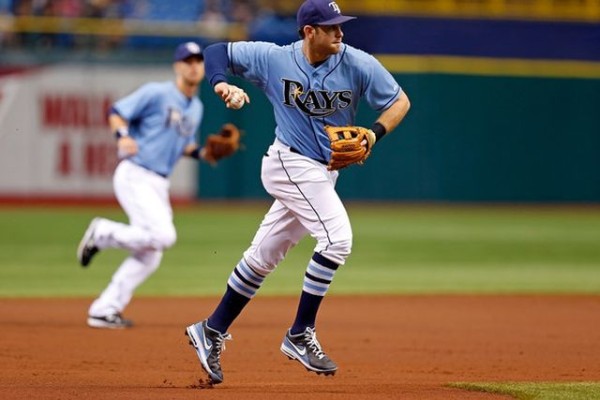2016 Fantasy Baseball: The Importance of Plate Discipline

Often times, comments on the site generate a topic idea. Our collective rankings on the various positions have generated a number of comments and one rater in particular has come under a lot fire. One does not necessarily have to defend their rankings in so much as articulate a point of view. Unfortunately, twitter and the comments sections (as well as our new forums) do not always offer the best opportunity to articulate that.
Plate discipline governs nearly everything a hitter does. So, we are going to compare two third basemen in the crosshairs of the yearly rankings and one historical cautionary tale that will hopefully drive home the point that plate discipline is overwhelmingly important. Of course, before we dive in, it is important that we establish some ground rules and define some terms so everyone is on the same page. Essentially, there are two kinds of data: results data and process data. Everyone knows results data. Those are essentially strikeouts and walks. Most fantasy players look at those numbers, and if you are only looking at those numbers, you are missing half of the story.
Process data eventually leads to results data. They don’t always correlate one to one, but you can think of process data like the grim reaper. Eventually, it gets everybody. With process data, we are looking at how often a player swings at pitches outside the strike zone (OSwing), how often they make contact on balls in the zone (ZContact), and how often they make contact overall (Contact). This data is readily available at Fangraphs, but it can also be found at Baseball Prospectus and other sites as well. So, let’s compare our two players using the infamous Player A and Player B test.
Player A
| SO% | BB% | OSwing | Zcontact | Contact | Diff | |
| 2013 | 14.0 | 4.5 | 42.8 | 88.0 | 82.2 | 5.8 |
| 2014 | 12.4 | 5.4 | 38.6 | 89.4 | 84.7 | 4.7 |
| 2015 | 16.5 | 5.1 | 39.9 | 90.9 | 80.2 | 10.7 |
Player B
| SO% | BB% | Oswing | ZContact | Contact | Diff | |
| 2013 | 23.4 | 10.1 | 25.0 | 83.4 | 76.6 | 6.8 |
| 2014 | 19.0 | 8.1 | 31.6 | 84.7 | 77.4 | 7.3 |
| 2015 | 19.7 | 7.6 | 31.1 | 84.9 | 78.5 | 6.4 |
All numbers must have a frame of reference to make sense, but even without league norms, you can see that these guys are fairly different. Player A has a more developed hit tool (ability to put bat on ball), but that hit tool is somewhat mitigated by the fact that he swings at more pitches outside the zone. This is particularly true when you consider that the league average Oswing rate usually hovers around 30 percent.
It has to be somewhat disconcerting that Player A’s overall contact rate is dropping in spite of the fact that he is making more contact on balls in the zone. Eventually, pitchers will stop pitching to him in the zone. He will either have to learn to lay off those pitches or he will begin to lose his effectiveness as a hitter. Of course, the wild card in this discussion is always how much time it will take for this to happen. This is where our cautionary tale will come into play.
Player B is not without his disadvantages. Yet, in terms of plate discipline alone, he has been fairly steady over the last several years. The drop in walk rate is probably more directly related to his perceived drop in power than anything. Most of you won’t be surprised to find out that Player A is Nolan Arenado and Player B is Evan Longoria. Does this mean that you should draft Evan Longoria over Nolan Arenado? Most prognosticators would call that foolish and I wouldn’t disagree with them. However, that does mean that you should keep your eye on Arenado because he is a likely regression candidate.
Cautionary Tale: Josh Hamilton
| SO% | BB% | Oswing | Zcontact | Contact | DIFF | |
| 2011 | 17.3 | 7.2 | 41.0 | 83.8 | 74.6 | 9.2 |
| 2012 | 25.5 | 9.4 | 45.4 | 77.7 | 64.7 | 13.0 |
| 2013 | 24.8 | 7.4 | 41.2 | 81.7 | 70.3 | 11.4 |
Everyone remembers how much of a fantasy force Hamilton was and how he had a huge fall from grace in 2013. Even qualitatively, that fall should have been obvious. He was a basket case in the playoffs in 2012 and then signed the huge deal with the Angels. Still, some fantasy players started salivating at the thought of Albert Pujols, Mike Trout, and Hamilton in the same lineup. Unfortunately for them and the Angels, his performance fell off the table.
Naturally, when you look at the numbers above you can see that the performance didn’t actually decline that much. In fact, it actually improved in most areas from the previous season. 2013 wasn’t so much a disappointment as 2012 was a complete anomaly. His overall contact rate and the rate of swinging outside the zone simply couldn’t be sustained. Hamilton hasn’t returned to that level since and is now a fantasy afterthought. The implication is simple. It would be foolish to predict that Nolan Arenado will become a fantasy afterthought overnight. However, his approach to hitting is troublesome and it will catch up with him someday. It probably won’t be 2016, but it bears watching.




